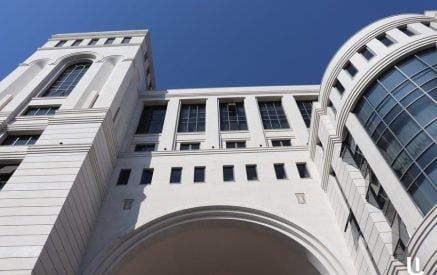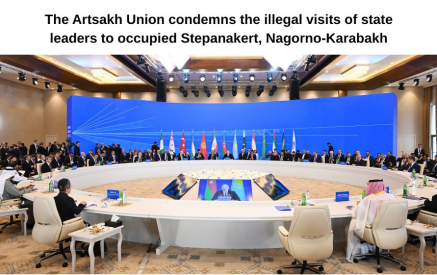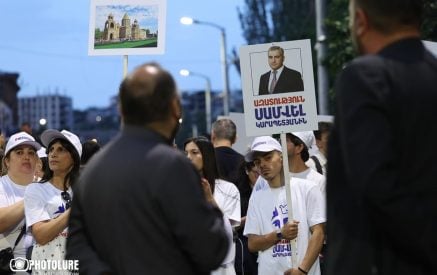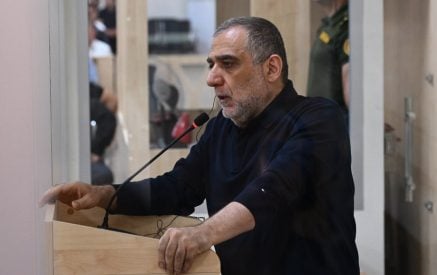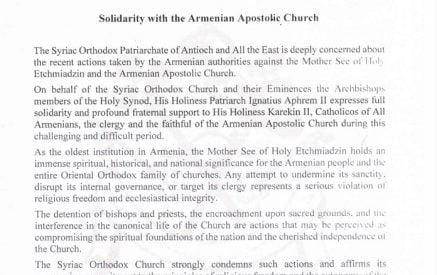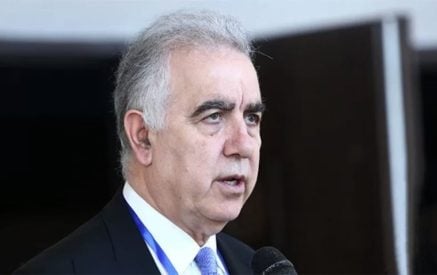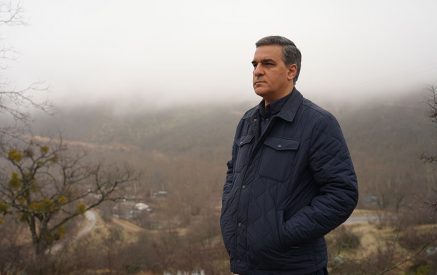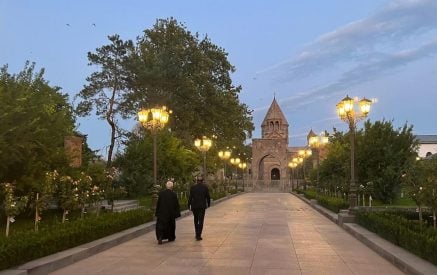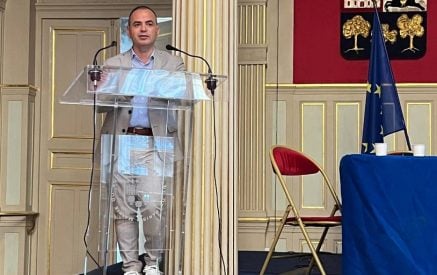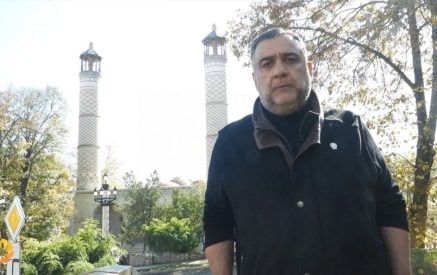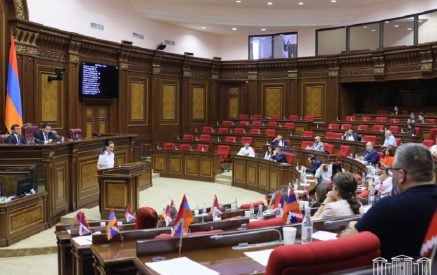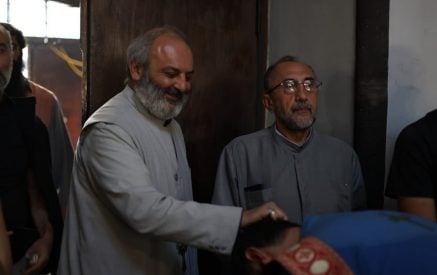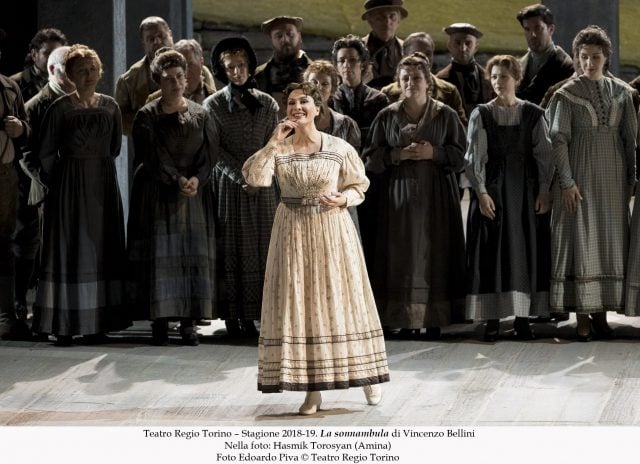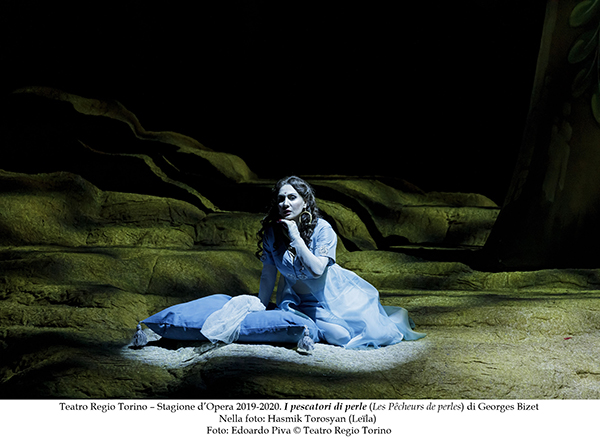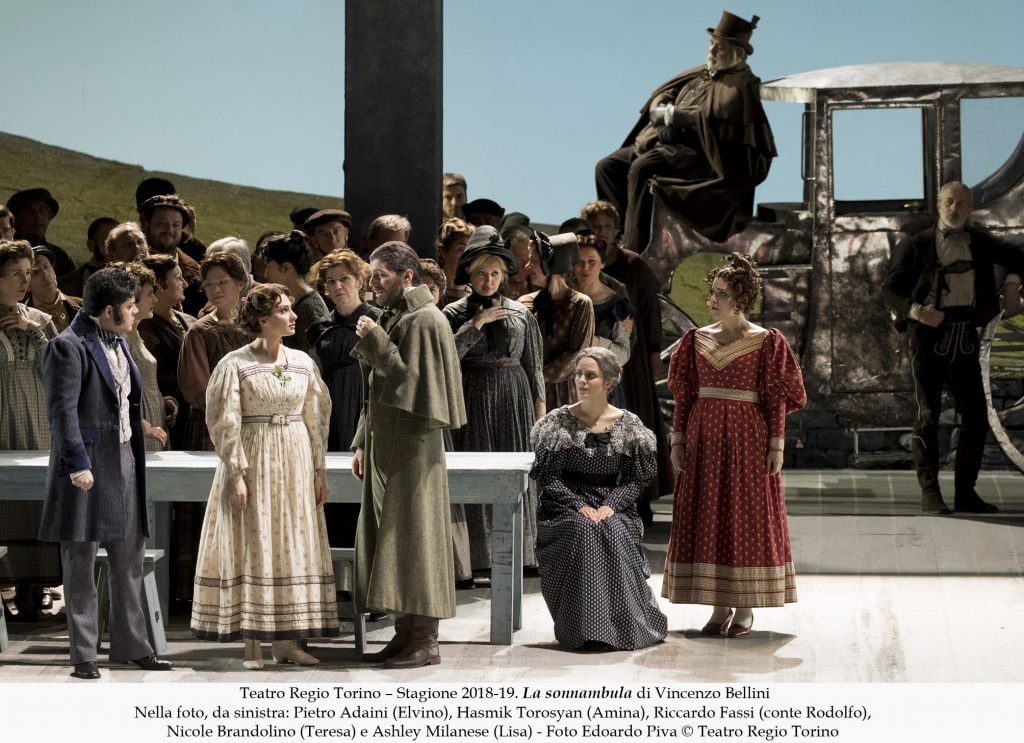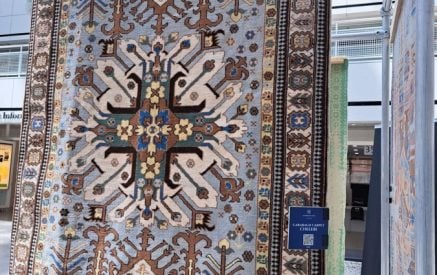(April 11th, 2019)
Fernando Peregrín Gutiérrez
La sonnambula is an opera semi-seria in two acts with music by Vincenzo Bellini and libretto by Felice Romani. It is considered with I Puritani and Norma one of the three masterpieces of the composer from Catania. Related to opera buffa, opera semi-seria contains elements of comedy but also of pathos. In general, it can be distinguished from tragic operas or melodramas by the presence of a basso buffo. La sonnambula has all the characteristics of the genre, except for the presence of the required basso buffo and therefore it is considered to be between opera seria and semi-seria. The latter, moreover, is characterized, as has been said, by a certain pathos content, a drama that often emerges in the development of the plot that is clearly distinguishable from the tragedy of Italian romantic melodrama. This lyrical genre often unfolds, as in La sonnambula, in a village and pleasant environment. For all this, it is also often referred to as dramma di sentimenti, dramma semi-serio or tragicomic drama. Of all these designations, the one that best suits this romantic bel canto melodrama is, quite possibly, that of dramma di sentimenti, which are always on the surface, on the very skin of the character, especially in “Amina”.
Read also
At the time Bellini composed this brilliant work, somnambulism and a kind of proto-spiritism were very fashionable in Italy (spiritism as we know it today, that is, as pseudoscience or esotericism, was forged around 1850 with the writings and spiritualist sessions of the French Allán Kardec). In the years in which Bellini worked in this opera, which premiered in Milan in 1831, it was folkloric spiritism more related to fearsome ghosts than spirits of “disembodied” beings, known and even very dear to those experiencing visions.
Thus, “Teresa”, the adoptive mother of “Amina”, the sleepwalker, exclaims in the first act, with a mysterious air, “You know that the time is coming when the terrible phantom appears”.
The subject of the ghost allows Bellini and his librettist Felice Romani to establish a clear class difference, but without intending to show a class struggle of Marxist origin — not yet formulated at that time — between the ignorant and credulous villagers and the “Count” , the outside traveler who suddenly appears at the beginning of the first act with the appearance of a cosmopolitan, who comes from other places possibly more influenced by the rationalism of the Enlightenment than in the village where the action takes place. This difference, this intellectual superiority and education will be what allows the “Count Rodolfo” explain and clarify the natural and real nature of somnambulism that has nothing to do with the esoteric, supernatural and enigmatic ghosts that inhabit the simplistic imagination of the villagers, which allows him to save the reputation of impeccable honesty of “Amina” and thus the drama ends festively among the villagers and the triumph of the love of the two protagonists.
Bellini argued that his technique of composition was based on imagining and maturing his vision, his ideas, generally on an heroin (“Amina”, “Norma”, “Elvira”, from I puritani (although later, the interpretative tradition has made it is considered an “opera of tenor”), “Alaide”, from La straniera, “Beatrice”, from Beatrice di Tenda). Next, seek and convince the interpreter that for him he would do justice to his devised character. We know that in the case of La sonnambula, Bellini composed it with the voice and talent of the soprano Giuditta Passta in mind. This exceptional prima donna who dominated the lyrical scenarios during the first third of the ottocento (XIX Century, had a very extensive register ranging from the bass of a contralto to the acute and over-acute of the light sopranos. It was the prototype of the soprano sfogato (not to be confused with the modern mezzo-soprano) and in whose wake arose the dramatica d’agilità whose maximum exponent in recent times was Maria Callas. In this sense we must remember that at the beginning of the twentieth century the leading role was used for the showcasing of coloratura soprano-leggero with a kind of goldfinches singing who filled the role of “Amina” with ornamental excesses more typical of the Baroque than the bel canto of Bellini (as an example, Amelita Galli-Curci); It was not until the emergence of Maria Callas that “Amina” was restored to its expressive and dramatic essence, and created the modern version of this rol that today makes absolute reference.
The staging of La sonnambula, which apparently should not have great difficulties, given the simplicity of the story, the characterization of the characters and the almost linear development of the plot, represents a major challenge for a regista who does not want to fall in the topics of reinterpretations of Tyrolean scenes and landscapes of the style-staging of Contadinotte (villagers), typical Tyrol aprons, flowers, rustic carts, mills, coniferous forests, which has been used and abused so much between the 1940s and 1970, a string of common places more typical of the Elisir d’amore –in which, however, the Tyrol is changed by the Basque Country –than of this dramma di sentimenti.
At the other extreme, the team responsible for production can opt for a gratuitous and capricious reinterpretation of the plot in a desire for originality and scandal, resorting to the point of inventing a post-modern account of La sonnambula, perhaps, in the mode of obscene marriage between Freudian psychoanalysis, Marxist pseudo-sociology and vulgarities and trivialities proper to the politically correct or that are simply fashionable, “killing”, so to speak, La sonnambula.
The production of Teatro Regio of Turin is signed by Mauro Avogadro and dates from 1998. In this return to the stage this season, some sets have been simplified for the sake of greater schematic realism, far from a romantic naturalism and, in general, this production retains its validity, mainly due to its simplicity, respect to the music and the libretto and the careful and reasonably accurate stage direction of actors. Something that can not be said, however, of the mass movements, sometimes, somewhat confused, tight and tangled. All the action takes place in a single and large interior space limited to the sides of the scene by a high wooden panel between two rectangular columns topped by sober Doric-style capitals; the background of the scene, diaphanous and divided into two sections by two simple square pillars, serves as a screen for projections, in general, simple and well-made.
This sets designed by Giacomo Andrico can be considered of classic minimalism: the mill is represented by a staircase in the front right of the stage that leads behind the scenes; the room of the “Conte Rodolfo” is reduced to a bed in the middle of a huge window of two levels and through which it can be seen the slope covered with green grass in which it will be seen the nocturnal appearance of “Amina”. In the second act, a few trunks of bare trees of notable circumference, of the type of Austrian white willows, evoke the characteristic coniferous forests of the Tyrol.
The touch that gives color and proper realistic effects are entrusted to the costumes designed by Giovanna Buzzi, inspired by cave paintings of the nineteenth century, austere, with a certain elegance within its rusticity, and mainly pastel shades. They call the attention the dresses of “Amina”, white and simple, as well as her somnambulistic nightgown, and the “Count Rodolfo” costume, which reflects authority and cosmopolitan fashion. Perhaps, however, the way in which the costume designer has dressed “Elvino”, no matter how rich a landowner he is, looks excessively elaborate and that is like the peculiar one of an elegant villager at the wrong time.
The second cast chosen for this season intervened in the representation that is reviewed here. For references that to me deserve all credit, this second singing company was the same and even better—specifically in the case of “Amina” and “Count Rodolfo”—than the first.
Hasmik Torosian, a beautiful Armenian soprano, made a triple debut that night: opera house, composer and rol. And she reached a great triumph. She is a lyric soprano, with excellent coloratura and sufficient acute–and even over-acute–register to be able to sing lighter roles, as a soprano leggero. She has a very particularly well-toned voice and his polished legato and graceful phrasing are remarkable throughout all her register, which results from a very prominent homogeneity. In the upper side of her register, her voice, without losing the timbre that is her own, is light enough to master the ornamentations with ease, security, and good taste. It can be said that Miss Torosyan executes the agilities that Bellini requires in her arias in order to give, with a wide palette of vocal colors, the rich, varied and very nuanced, while simple and sometimes, even childish, feelings of “Amine”. Excellent in her entrance cavatina, “Come per me sereno …” and even better in the cabaletta that follows “Sovra il sen la man mi posa …”, where she dosed with great intelligence all the agilites and ornamets that the composer asks, without additions that have always been used as vocal pyrotechnics in order to give a spectacular performance that often results superfluous, and that can even be vulgar and not precisely of good taste. She made splendid filati (literally spinning, refers to bringing a vocal line down to a wisp of a sound, a thread, while retaining full vocal support, and then maintaining the sound)in the over-high range of her vocal register (splendid filato D#6 in “Ah!, non giunge uman pensiero”) and attacked the most compromising notes in pianissimo with very crystalline crescendi and splendid legato.
Another noteworthy aspect of the interpretation of this young soprano is the way she interprets the two final arias, that of the sleepwalking scene, “Ah! Non credea mirarti”, and the following and conclusive “Ah! Non giunge uman pensiero. ” Some interpreters of this character have sung these two arias as if it were one, because they do only see in both their pyrotechnics and exhibitionist effects, performed almost mechanically. Miss Torosyan went very far from this conception of the conclusion of this opera, because the first aria has to be full of a restrained “pathos”, melancholy, sadness, and with a clear aroma of languid resignation before the unfairness of the situation and must, likewise, reflects the incredulity of the virgin in love with her love tragedy. He must have the hunch that Miss Torosyan knew thanks to the great technique of bel canto with which he knew how to use the vibrato stretto (slight and controlled vibrato, not an unaesteic wooble) expressive and seductive that has the higher register of her voice. There must be a lot of pathos and no hysterics, because you should not confuse hysteria with sleepwalking, as has sometimes happened, even among renowned sopranos.
For its part, however, the final aria should be an exaltation of joy, of regained happiness and show the passage of almost childish perplexity to the security of a happy future, something that the Armenian singer knew how to do with great skill and very convincingly. Let’s add that his acting performances are unbeatable and full of great charm that captivated the spectators of the Regio.
Following with the cast, Pietro Adaini was a notable “Elvino”. He is a very young tenor who also debuted in this Bellinian role. His voice is more of a baritenore than of a contraltino in terms of Rossini’s voices. His squillo (ring, singer’s formant) and the brightness of his high register are very remarkable, something very evident in his aria of the first act “Prendi, l’anel ti dono …”, and in the duet with “Amina” that follows.
There are certain defects that must be corrected such as some nasalities in the middle register and an excess of momentum and blows of gola or throat, when approaching the passing to the high register, as happened in “Ah !, perché non posso odiarti” that negatively affects the line of singing; nevertheless, Mr. Adini has generally of good belcantista style. Neither does he still dominates the singing with the voce in maschera (voice in the head), although he always sings with good fiato. However, he knew how to get the psychology of the character right and colored his changing emotions and feelings towards her fiancée with his voice. Besides being a good singer, he showed a great actor’s qualities.
Splendid Riccardo Fassi, both stage and vocally, as “Count Rodolfo”. His vocal material is excellent and his presence, imposing, aristocratic and of noble and faultless emission sul fiato (with continuous breath). His entry aria “Vi ravviso, or luoghi ameni” reflected an impeccable emission, an elegant phrasing, and the serious low register required by the character. He excelled in ensembles with chorus, especially if we take into account that the only defect that can be put to this stable body of the Teatro Regio in Turin is the low consistency and sonority of the bass section. It is, in short, an excellent bel canto singer of height and predictable great future.
Ashley Milanese started quite well in her cavatina of the first act “Tutto è gioia tutto è festa”, which made her think that she was going to be a great “Lisa”. But ended with certain difficulties his other and difficult cavatina of the second act “De’lieti auguri a voi….” However, in her long presence in this dramma di sentimenti, she was more than enough and correct, and she can be considered as a good comprimario singer, also known as the role of a character.
Between notable and excellent the rest of the secondary roles, being of justice to highlight the intervention of the mezzosoprano Nicole Brandolino, who gave a great impression, both vocally and theatrically, of “Teresa”, the miller who adopted in her day the orphan “Amina “. Gabrile Ribis played with great success and good baritone’s voice “Alessio”, a coarse and stubborn villager, without incurring at any time in the vulgar caricature. These last two singers were the only ones that appeared in the two casts planned by the Regio for these performances of La sonnambula in this lírics season. Very acceptable the tenor Vito Martino, in his brief assignment as “Notary”.
The Regio choir is of undoubted quality and perfectly dominates the repertoire of Italian melodrama. It could be observed, however, a certain imbalance between the female and male sections to the detriment of the latter, especially in the case of the low register, with almost no sound presence of the basses (that there are no such, but rather basso-baritoni) .
In this opera Bellini uses the chorus in the manner of the theater of ancient Greece, that is, to present the context and summary of the situations to help the public to follow the plot, with comments on the topics and events. In that sense, the Regio choir was very effective and well-coordinated. Pity that the main piece that contains this opera for the show of the choir, “A fosco cielo”, of the first act, the sopranos clashed at the beginning, but then everything was adjusted perfectly and the set finished brilliantly. Equally brilliant was the contribution of the choir at the end of the two acts, in particular in the great concertante with which the opera concludes.
At the head of the orchestra and as maestro concertatore of singers, choir and instrumentalists was Renato Balsadonna, a conductor whose main quality is precisely that of concertatore (coordinator). He conducts with great attention, care, and precision, and achieves an almost perfect balance between the pit and the scene. He obtained from the high string a clear and transparent sound, very Bellinian, and there was no lack of the necessary morbidity in the cellos, a reflection of the tenderness and the sad resignation of the protagonist, in the sleepwalking scene.
The brass instruments–especially the horns, of remarkable virtuosity–and the woodwinds gave the sound environment that evokes the country character in which the action takes place, as well as the intensity of the most dramatic moments. To highlight also the solos of flute and oboe, which accompanied and supported with great success the cabalettas.
It is evident that the Venetian maestro has a lot of trade as an Italian opera conductor, and accompanied at all times with softness and flexibility the singing of “Amina”. He had one of his best moments in the delicate and suggestive accompaniment of the two fiancés in the beautiful duo “Son geloso del zefiro errante”, which had the texture of fine lace made with melisme from the voices. Perhaps it can be missed that the excess of controlling zeal did not allow the master in some passages a certain fantasy–as, for example, in the accompaniment of the adornments of the last “Amina” aria— which would have allowed the the sublime melody of that aria reached a higher allure.
In singing filatura (literally spinning), refers to bringing a vocal line down to a wisp of a sound, a thread, while retaining full vocal support, and then maintaining the sound.




